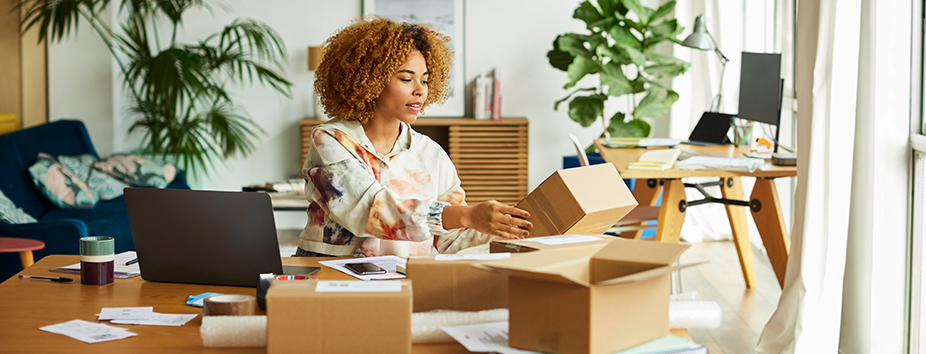What’s the cost of selling a house?

When it comes to selling your home, there are plenty of things to take into consideration – but there’s one aspect that's sometimes overlooked: the costs involved. Let’s take a look at what they are and how you can budget for them.
We all want to make a handsome profit when selling our home or investment property, but it’s important to budget for the costs involved will selling – because they can eat into some of those zeros.
Depending on your location and situation, the costs of selling property in Australia isn’t always cut and dried. The fees and commissions you might need to pay can vary based on the state you’re in – and are generally higher in metro areas like Sydney and Melbourne. There are also voluntary costs you might decide to pay, as well as non-negotiable costs that you’ll need to budget for.
All up, there are four main costs you’ll need to think about:
- Real estate agent fees or commission
- Marketing costs
- Conveyancing fees
- Capital gains tax (CGT)
Let’s dive in and find out exactly what they involve.
Real estate agent fees – an expert in your corner
When it comes to selling a property, things can get a bit overwhelming – especially if it’s your first time or you’re not super familiar with the process. That’s why most people choose to work with a real estate agent to get the job done.
An agent could be your key to your success (and a stress-free experience). They’ll do all the heavy-lifting for you: from listing the property and arranging open homes, to generating interest through marketing and negotiating with potential buyers – your real estate agent will guide you through the entire process.
But like all good things in life, this service comes with a cost. There are two main ways agents charge for their time:
- Flat fee – the agent and vendor or seller (which is you) agree on a fixed fee that stays the same no matter what the property sells for.
- Commission – the agent receives a percentage of the sale price of the home – usually between 1 and 3 per cent. The rate an agent charges can depend on a number of things, including the property value, the agent’s experience and if there was a strong competition between agents to take on the job.
There’s also the possibility for you to explore a bonus structure with your real estate agent. Meaning – if your home sells for a higher price than the reserve, then you can negotiate with the agent to pay an agreed percentage of the difference between the reserve price and the final sale price. The benefit of using a bonus structure? It incentivises your agent to push potential buyers for a higher sale price – which could potentially mean more money in your pocket.
To save on costs, some sellers choose to sell their property privately without the help of a real estate agent. This way might save you a bit of money, but most people prefer to engage an agent to lean on their experience and make the selling process as seamless as possible.
The key take away? Always discuss all fees and inclusions with your agent before signing on the dotted line. You want to be across the numbers and aware of how much you might end up having to fork out.
Marketing costs – eyes on the prize
Marketing your property to potential buyers is an important part of the selling process. It’s how you drum up interest and get your property in front of potential buyers.
This is a cost that can vary quite a bit as each real estate listing is unique, with real estate agents using different marketing campaigns and strategies to showcase the value of your home to potential buyers. Your property can be marketed in lots of ways, including things like signage out the front of your home, online listings on home sales websites (like realestate.com.au or domain.com.au) or print ads in the local paper.
Marketing costs generally include professional photography or videography, as well as and the option of home styling or staging. Home staging involves a professional stylist coming into your property and adding furniture and décor to help make it look as attractive as possible. After all, the aim of the game is to present the property in the best possible light to buyers and potentially increase the market value of your home.
Conveyancing fees – getting the sale over the line
Conveyancing fees are non-negotiable costs as part of selling your home. These are legal fees that pay for the transfer of ownership of a property from one person to another. This is definitely something you want to outsource to a professional.
There are a number of legal documents that need to be prepared and processed in order to finalise the sale – so you’ll need to get a licensed and accredited conveyancer or solicitor to manage this part of the selling process. These fees usually sit around $800 and $2,000 – so remember to factor this into your budget!
Lender fees - finalising your mortgage
If you have a mortgage on the home you’re selling, you might need to pay lender fees as part of the sale process. These could come in the form of:
- mortgage discharge fees
- early exit fees (often associated with breaking fixed term loans)
- settlement fees.
These charges depend on your bank – so it’s a good idea to check in with them before you put your property on the market.
If you’re buying another property, you may be able to save on these costs by choosing to keep your mortgage with your current lender. You don’t necessarily have to exit your current mortgage just because you’re selling a property. Plenty of home loans give you the choice of taking your mortgage with you when you move into your next home – this is known as loan portability or substitution of security.
Loan portability could be a way for you to speed up the process too. It’s generally quicker than applying for a new loan because it lets you transfer your existing loan to your new property. It also helps you avoid some of the upfront costs involved with exiting a home loan and applying for a new one. If this is an option for you, it’s definitely something to think about.
In some cases, you might have found your new home, but your current property might still be on the market. A bridging loan could help you see through the period between selling your existing property and getting into your new home. This is a short-term loan (usually up to 12 months) that gives you the option to make repayments only on your existing loan – but once you sell your current property, you’ll need to pay off the interest on your bridging loan. The size of your bridging loan is usually calculated by the amount of equity you have in your current home and your borrowing capacity.
Capital gains tax – profit
When the time comes to sell your property, you will (hopefully) be selling for a higher price than what you paid for it. If this happens, you’ll have made a capital gain and you may need to pay capital gains tax (CGT) on the extra cash.
You won’t pay capital gains on your primary place of residence, but if you decide to sell a property that is not your PPR (an investment property) – you will have to pay CGT.
The amount of CGT you’ll pay depends on a few factors, including how long you’ve owned the property, what your marginal tax rate is, and whether you’ve also made any capital losses from other sources that is available to offset your capital gains.
CGT discount of 50% is generally available for individual resident taxpayer who own an asset for 12 months or more. If you sell your investment property before 12 months, you won’t be entitled to the CGT discount. CGT is only applicable on the sale of an asset purchased from 20 September 1985.
As the capital gains calculation can be complex, it is recommended that you consult your tax adviser to ensure your capital gains tax is calculated correctly.
Extra costs
Now that we’ve touched on the main costs that come with selling your home, let’s explore some of the extra costs that might pop up along the way. Although these costs aren't mandatory, they could potentially increase the value of your home – so they’re worth thinking about. These costs include things like:
- Professional deep cleaning (inside and out)
- Carpet cleaning
- Lawn mowing and landscaping
- General repairs or upgrades to fixtures
- Renovations
Ready to get the keys to your next home?
Selling your home and making your next move doesn’t have to be overwhelming. At St.George, we’re here to support you in any way we can, so if you have questions – just ask. Call us on 1300 304 660 or visit your local brand to chat to a St.George Lending Manager about how you can take your next step on the property ladder.

Pay less with an offset
Don't have an offset account already? Find out how it could help you pay much less interest over time with your next loan.

Pay your loan off sooner
Here are 5 simple strategies to help you pay your loan down more quickly – so you can own your own home sooner.
Start your application online
A home loan expert will call you once you have submitted your application to talk through next steps.
Our Home Loans
Here's how we can help you get into your next home.
Some key features
Learn about the different features of your home loan and see how they could affect you.
Important information
Credit criteria, fees and charges apply. Based on St.George credit criteria, residential lending is not available for Non-Australian resident borrowers.
This information is general in nature and has been prepared without taking your objectives, needs and overall financial situation into account. For this reason, you should consider the appropriateness of the information to your own circumstances and, if necessary, seek appropriate professional advice.
The taxation position described is a general statement and should only be used as a guide. It does not constitute tax advice and is based on current tax laws and their interpretation.